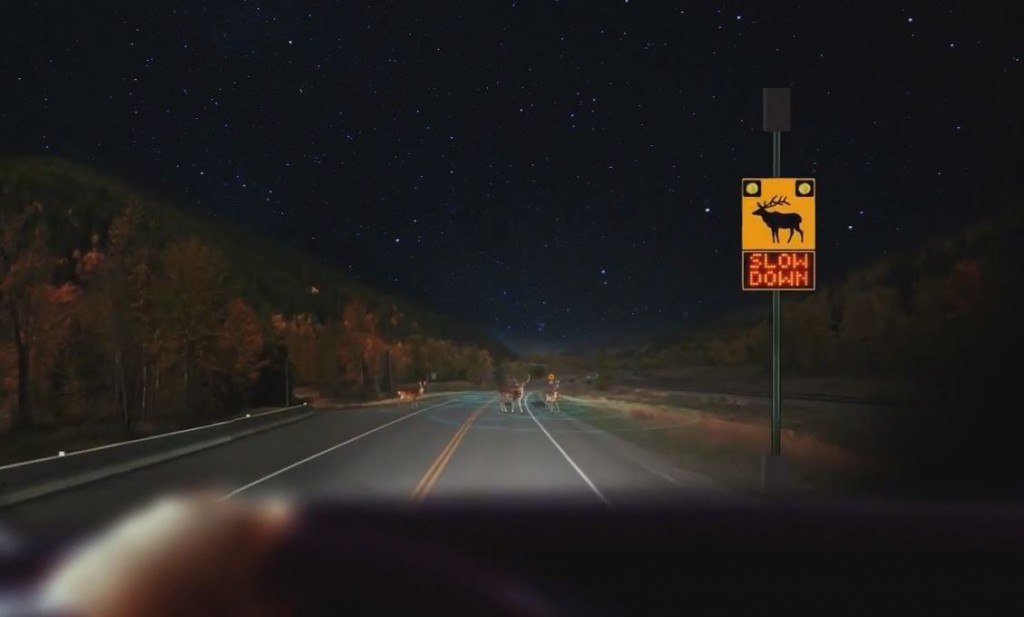Now that the two Wildlife Detection Systems on Highway 3 have been operating for about three months (as of July 2016), we thought you’d be interested is seeing some of the thermal camera footage we’ve captured showing the system safely guiding interactions between vehicles and animals.
How Thermal Cameras Work
They create images based on heat radiating from animals and objects such as vehicles. There are nine thermal cameras set up in each wildlife detection corridor, and they work in conjunction with radar sensors to detect wildlife and alert drivers of their presence with flashing roadside signs. The two detection systems cover about nine kilometres of Highway 3 where large populations of animals tend to roam.
The first video (above) shows a herd of elk in the wildlife detection corridor near Sparwood. Watch as lackadaisical elks wander in front of two commercial trucks. Good thing the drivers were alerted of the elk and had slowed down considerably before approaching the animals.
Now, in this next video, we see a cougar casually hanging out in the wildlife detection corridor near Elko.
The cougar actually sits in the middle of the highway for more than three minutes (the video is sped up), plenty of time for an unsuspecting driver to collide at normal highway speed. Imagine what could have happened if the truck driver hadn’t been warned of wildlife in the area and slowed down.
Why You Might Not See Wildlife
On that note, drivers have been asking us why they sometimes don’t see wildlife when the warning signs are flashing. There’s more than one possible explanation for this, depending on the instance, and the cougar video demonstrates a good one: the warning lights remain flashing for several minutes after detecting an animal, so the truck driver would have been alerted of wildlife in the area, but wouldn’t have seen the cougar.
So, if you see a warning sign flashing without any evidence of actual wildlife on or near the highway, it doesn’t mean the detection system is misfiring. The animals could have simply left the road; or, they are behind you – you see, the whole corridor flashes regardless of exactly where animals are detected.
Have you driven through one of these wildlife detection corridors? What are your thoughts on using technology to prevent collisions in this way?

Join the discussion